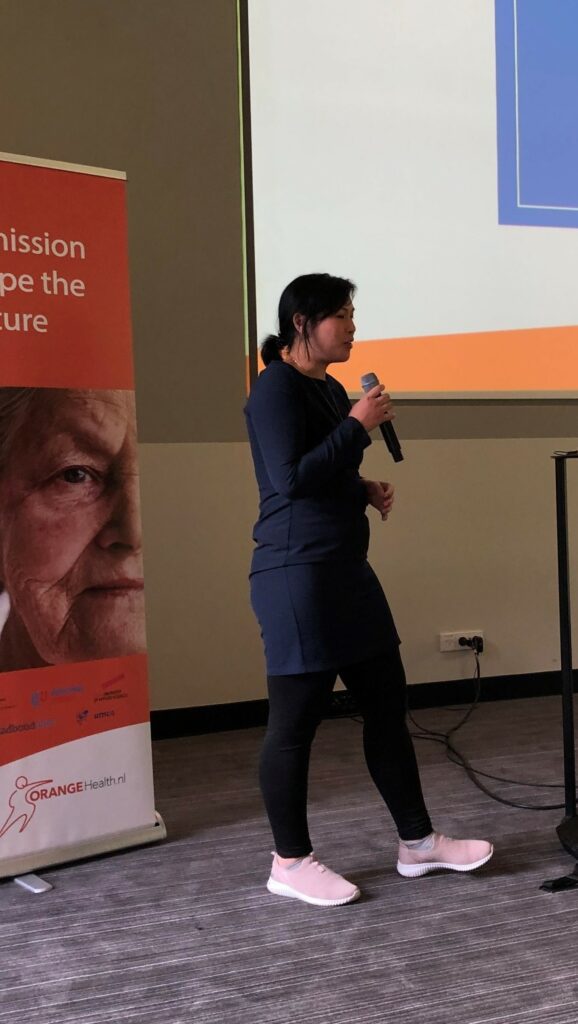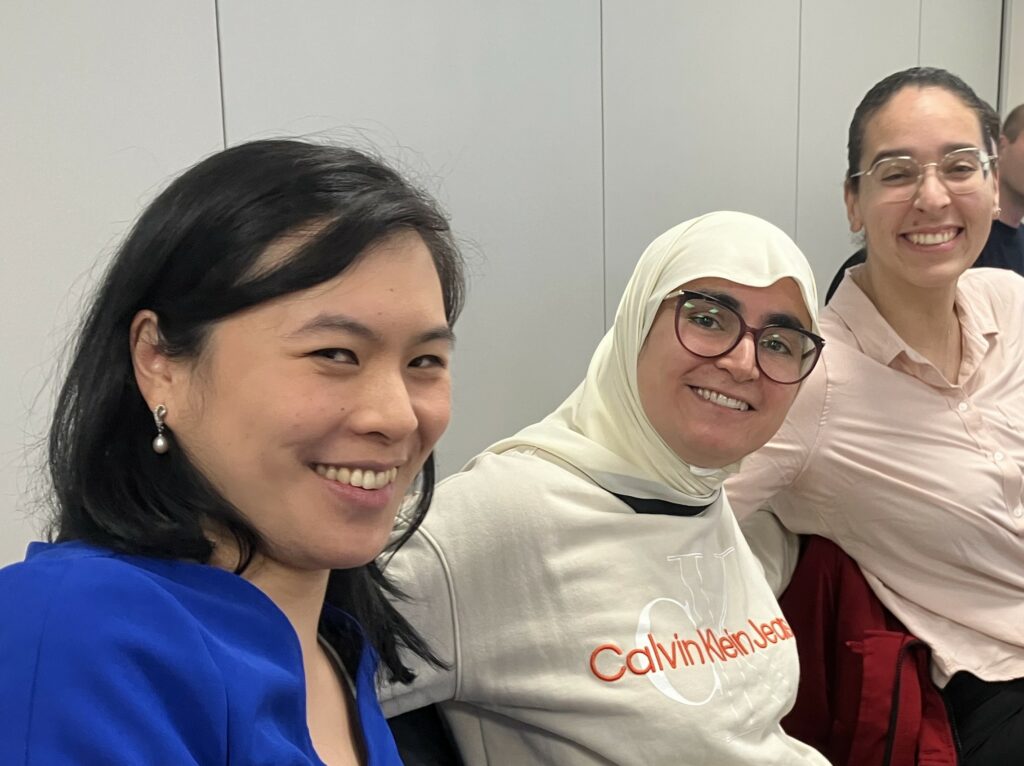Newsletter ORANGEHEALTH, January 2024

Dear Reader,
At the beginning of 2024, the ORANGEHealth team wishes you an inspiring and successful year. We would like to give you an update of everything that has been achieved by our researchers and partners in the first full year of our Kickstart project ORANGEFORCE.
The ORANGEFORCE project focuses specifically on oral care for older persons from a holistic approach. After all, an unhealthy mouth irrevocably leads to a reduction in overall health. Especially in the case of frail older people, in combination with other conditions and the use of medications, the focus on oral health can be weakened and lead to unnecessary reductions in quality of life.
ORANGEFORCE is committed to putting people first and connecting oral care with the entire care network so that the most appropriate care is provided. The fundamental scientific component within ORANGEFORCE is also concerned with unravelling the relationship between diseases in the mouth and those in the rest of the body. The sooner a disease can be detected, the greater the chance of successful treatment.
On behalf of the ORANGEHealth team, Willem Fokkema

The project is divided into three research lines. Below is an overview of the developments in 2023.

Research line 1: Innovative approach for oral care for older persons
Research line 1 is concerned with the research into oral care for older persons in oral care practice, vulnerable elderly people who need oral care at home and the development of the practice guideline for interprofessional cooperation on oral care for elderly people living at home.
Our research has shown that the awareness and implementation of the guidelines and the KNMT Practice Guide for oral care for older persons still needs to be greatly improved in oral care practices. In the coming months, we will make a plan on how we are going to do that. All ideas are welcome.
The UMCG research into oral health among elderly people with cognitive challenges who visit a memory clinic is going well. There are already many participants and the results are promising. The first findings from this study will be published during the consortium meeting in June 2024. ACTA’s study on oral care for older persons in the home setting will start soon. Among other things, (cost) effectiveness, impact on quality of life and the reasons why older people do or cannot receive oral care at home will be examined.
Researchers from Amsterdam, Groningen, Nijmegen and Utrecht are developing a practice guideline for interprofessional oral care for vulnerable older people living at home. With input from literature research, semi-structured interviews with healthcare providers and focus groups with general practitioners (and POH), pharmacists, oral care providers, home care and GGD employees, a draft of this guideline for interprofessional oral care has been drawn up. Through various cycles of implementation, testing and adaptation in practice, the concept will be adjusted and further developed into an effective guideline for vulnerable older people living at home. After that, the guideline will be used to support interprofessional collaboration. This design research will take place in 5 regions in the Netherlands. The contacts with the caregivers, but also with older persons are already promising!
Research line 2: Unlocking and connecting oral health data
This line of research focuses on large-scale data on oral health. Ultimately, the goal is to build an infrastructure that supports a learning care system.
Part 1 of the line deals with cohorts. This is where data is collected about the health of participants. Sometimes oral health is already a part of that data, or it can be added. The data is usually collected via questionnaires, i.e. reported by the participant himself. In the picture of the Netherlands you can see the cohorts that have already joined. We are currently looking at how the oral health data of these cohorts can be combined.
Part 2 of the line of research focuses on the collection of oral health data from patient records of dental practices. The data that are important for the data collection have been inventoried. We are currently working with our partner Vertimart on a first new module, in which non-restoratively treated caries lesions can be recorded.
Part 3 focuses mainly on linking data from oral care and general practices. In two focus groups with dentists and general practitioners, we explored what the professionals actually knew about each other’s profession, and what data about shared patients they would like to see from the other. The picture shows the top 3 desired information of both groups. As becomes clear, knowing exactly WHO the other professional is already an important prerequisite.
Researchers from Radboudumc, Nivel and UMCG looked at the overlap in people that can be found when the pseudonymised files are superimposed. This overlap turned out to be very substantial: 10% of the total group turned out to be able to be linked.
Partner Nivel is investigating the governance aspects for a possible oral care register to be set up. This oral care register should provide answers to questions about quality, including opportunities for quality improvement and effectiveness of primary oral care in the Netherlands. In addition, the reuse of routinely collected data, which is recorded in electronic health records during the oral care delivery process, can provide valuable knowledge for practice and policy.


Line of research 3: Measuring health in the mouth
This line of research is the fundamental research component of ORANGEFORCE and focuses on innovative methods to detect early signs of abnormal health in the mouth. In the longer term, this may lead to new diagnostics. This line of research consists of two parts:
1. Saliva collection and oral detection
We investigated different techniques for saliva; An unstimulated saliva sample of 2 minutes or a mouthwash sample (20-30 seconds) appear to be reliable for (bio)medical research. In these samples, both specific biomarkers and protein profiles can be measured. Clinical pilot studies show a specific and unique ‘fingerprint’ for periodontitis compared to healthy controls. For Sjögren’s disease, the salivary ion concentrations of sodium and chloride appear to be a reliable biomarker. This also provides starting points for faster treatment for other systemic diseases.
The data from the Maastricht Study will start in January 2024 to analyse the correlations between periodontitis, diabetes and other morbidities with biomarkers in corresponding mouthwash samples.
Questionnaire research shows that 80% of dental and medical patients are willing to participate in simple general health check-ups at the dental practice. There is a slight preference for providing saliva samples rather than blood droplets obtained with a finger prick.
2. Intra-oral detection
Acid reflux from the stomach, especially at night, is a major risk factor for tooth erosion. The project team has developed an intra-oral pH sensor to measure intra-oral acidity. In vitro tests have been carried out for reliability and stability (thermal stability; time effects (drift); viscosity effects). The next phase will be a pilot clinical study on the feasibility and early performance of the intra-oral pH sensor in volunteers.
